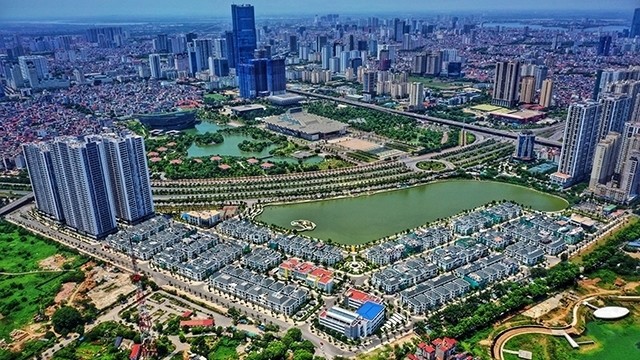Developing comprehensively, improving people’s livelihoods
In August, Hanoi is entering its most charming season of the year. This year, the capital city is celebrating the 20th anniversary of its recognition as ‘City for Peace’ by UNESCO. The title was granted in recognition of the efforts made by the city’s authorities to develop human resources and urban infrastructure, protect the environment, and safeguard cultural values.
Over the past two decades, the city’s Party Committee and authorities have put forward sound guidelines and policies, which have kept pace with the development situation of the country and the world in general and have brought about comprehensive achievements in all fields.
Accordingly, after every Party congress when the Party Central Committee issues a resolution, the Hanoi Party Committee has thoroughly studied the resolution and found practical ways to realise the document. The city’s Party Committee have done well in promoting the position, responsibility and the leading role of Hanoi in fostering the Doi Moi (Renewal) process and enhancing Party building.
Hanoi has also taken the lead in studying and following President Ho Chi Minh’s ideology, morality and lifestyle campaign as well as in implementing two Party-building resolutions adopted by the fourth Party Central Committee (11th and 12th tenures).
The municipal Party Committee has been active in addressing pressing issues of the city, contributing to establishing trust among cadres, Party members and people from all walks of life.
The city’s Party Committee has taken on creative practices to promote democracy and promote the supervising role of the people in order to improve workplace efficiency and increase the responsibilities of cadres and Party members.
Encouraging outcomes in Party building have facilitated the city’s programmes in enhancing infrastructure, building new rural areas, cultivating traditional cultural values, and improving people’s livelihoods.
Accordingly, the city’s poverty rate dropped to 1.16%, a goal achieved two years ahead of schedule. With 42.4% of communes having earned new rural area status, the gap between rural and urban areas has gradually narrowed.
The annual income per capita has reached VND116 million (US$5,000). In the first half of this year, the gross regional domestic product (GRDP) of Hanoi grew by 7.21%. The city retained the lead with the highest portion of FDI attraction nationwide during the period, posting US$5.41 billion, and posted a total budget revenue of nearly VND132 trillion (US$5.7 billion). Among 63 cities and provinces nationwide, Hanoi ranked second for administrative reform, and the satisfaction index of people for public administration services jumped 16 places.
Affirming the capital city’s position

Hanoi has secured the eighth position on the list of the world’s 25 best destinations in the eyes of international friends
The municipal Party Committee has organised working groups to northern provinces to share its experience, boost trade promotion, and expand cooperation in agriculture and rural development, transport, healthcare, education, and environment protection with the host localities.
As an economic hub of the country, Hanoi has attracted many world-leading groups and investors. Last year, the city lured US$7.5 billion in total foreign direct investment (FDI) and granted licences to 640 new FDI projects with total registered capital of more than US$5 billion.
In the eyes of international friends, Hanoi has secured the eighth position on the list of the world’s 25 best destinations. The number of foreign arrivals to Hanoi has seen remarkable increase over the past two years; the figure reached 3.54 million in the first sixth months of this year, up 223.5% year-on-year.
Hanoi is the first locality in the country to complete a project on taking inventory, classifying, and protecting tangible and intangible cultural heritages. Five cultural heritages in the city have been honoured by UNESCO as World Cultural Heritages.
The city’s authorities also view science and technology as an important driving force to facilitate its rapid and sustainable development, and towards the building of a smart city. Hanoi stood second in the level of readiness for applying information-communications technology.
Hoang Trung Hai, Politburo member and Secretary of the municipal Party Committee, stressed that the municipal Party Committee would stay consistent in building a transparent and strong Party, enhancing the leadership and fighting capacity of its Party organisations and Party members while promoting the cultural and heroic tradition of the city and upholding the great solidarity of its entire people. Further efforts will be made to mobilise all available resources for the Doi Moi (Renewal) process, industrialisation, and modernisation of the city.
In June 2019, two decades after winning UNESCO’s recognition as ‘City for Peace’, Hanoi submitted a dossier to UNESCO to join the UNESCO Creative Cities Network, which honours cities worldwide for their investment in culture and creativity as an accelerator of sustainable development. According to experts, Hanoi has met the criteria set for the title thanks to its rich and time-honoured culture, unique traditional craft villages, and creative cultural practices taken by the city’s authorities and its people.
Becoming a creative city and a smart urban area not only creates motivation for Hanoi’s development but also helps to establish sustainable value for the city’s future.
















